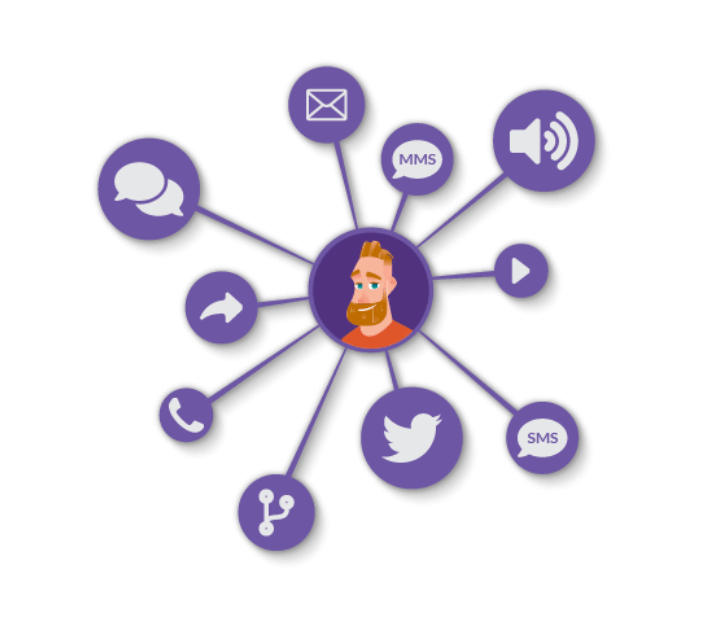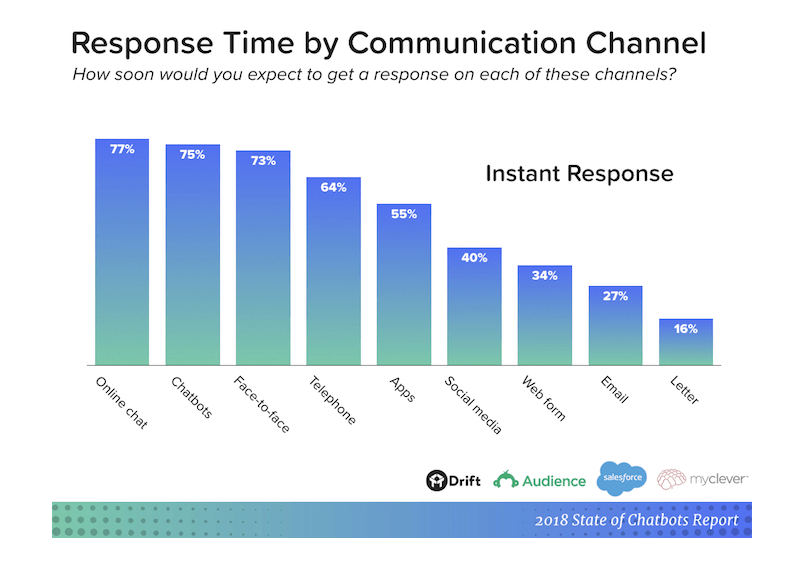
6 Tips to More Conversational Customer Relationships
Customers who have a positive emotional experience are 6x more likely to purchase from your company again. And, they’re 12x more likely to recommend you to their network.
That’s why building conversational customer relationships is so important for your agents. Conversational service builds long-term relationships with customers. It connects customers to your company in a more meaningful way than the typical transaction of one-off problem-solving.
Your customer service experience is about more than a quick fix for a customer issue. It’s an opportunity for your customers to connect with the people behind your company. Those moments of human interaction are what define your brand. They resonate with your customers and shape their perceptions of your business.
It’s why I remember the last cup of coffee I purchased.
Not because I swooped in quickly to grab my latte waiting on the counter. But because the friendly barista told me I had the same name as her childhood Cabbage Patch doll. Her small, personal tidbit created an instant memory that’s stocked in a tiny jar in my brain. That pleasant interaction is one that will bring me back to the same coffee shop next week – even though it’s not on my direct route to work.
Turns out, I follow the pattern of thousands of other consumers.
With the right coaching and set of tools, you can make conversational customer relationships a priority for your agents.
Here are 6 tips to turn interactions into relationship-building conversations.
1. Build trust and address customers by name.
For starters, coach agents to address your customers by name. Kicking off an interaction on a first-name-basis creates an instant personal connection between your agent and customer. Then, to keep that authenticity going, agents need to set expectations with your customers. Even when it’s hard. Are your wait times longer than usual? Is there an active bug that your team is trying to fix? Is your computer running slow today? Tell your customers. Trust comes with transparency. If your agents are quick to set expectations, your customers will feel comfortable and be more open during the interaction.
Next, bring that transparency to every piece of your service experience. We’re in the age of bots. Don’t try to disguise your bot as a human. Let your customers know they’re working with a bot or an automated system. And, always give them an escape route to a live human if they’d prefer.
Consider giving your customer-facing bots a name, too. Giving your bot an identity makes even seemingly small interactions more conversational and memorable. When you talk to Siri or Alexa, you ask questions as you would to any other person. If you removed that identity, though, it would feel quite uncomfortable to stand in an empty room and ask your speaker to tell you what the weather’s like tomorrow.
2. Use an omnichannel contact center platform.
Ease of communication and connection are powerful elements of the customer experience. An omnichannel contact center platform gives customers both.
Conversational service starts with interacting how your customers want, not forcing them to communicate through a certain channel. Once your agents meet customers where they are, an omnichannel platform integrates with all your other data systems, so agents get a full view of your customer and more context for their interactions.

That context is what turns interactions into conversations. Then, agents use that data to personalize every interaction and inform customer conversations.
Plus, an omnichannel platform lets agents and customers switch channels mid-interaction. Switching channels without interruption creates a natural flow for a conversation and reduces customer effort. High-effort customer experiences, like talking to multiple agents or reaching out for help on a channel with no response, are a key driver for your customers to leave. CEB found that 96 percent of customers who deal with high-effort experiences become disloyal and move on to a competitor.
3. Make coaching conversational.
If your coaching is transactional, you set the precedent for your agent-customer interactions to be transactional, too.
Use in-line training and coaching methods to give your agents more context for your comments and developmental feedback. Tag a moment in their interaction with a specific piece of feedback. Then, they can see that 54 seconds into their call, their tone shifted. And, the customer noticed, creating a disconnect during the interaction.
Share feedback to start a developmental conversation, not to criticize. Create a feedback loop with your team and encourage constructive conversation about the feedback you give. Let agents know it’s okay to ask questions and share their point of view. You’ll create a conversational culture that will trickle down from your manager-agent relationships to your agent-customer relationships.
4. Shift your language.
First off, use “we” phrases instead of “you” phrases. Especially if your agent is helping a customer complete a task. Saying, “Next, we’ll log into your computer and turn your service back on” positions the task as a team effort. On the flipside, saying, “Now, log into your computer. Then, I’ll turn your service back on” creates an invisible forcefield of separation. Your agent’s word choice sets the customer up to move through a quick transaction and removes the teamwork that leads to better agent-customer relationships.
Next up, eliminate negative words from your agents’ vocabulary. Coach your agents to shift their language from negative to positive or neutral. Like using the word “issue” instead of “problem.” That simple word swap may seem minor, but in the context of an interaction, it makes a huge difference. Negative words put your customers on defense. And when your customers have their guard up, there’s no way to have a productive conversation.

Your customers won’t leave with that warm and fuzzy feeling, and that negative interaction won’t be one that builds a lasting customer relationship. We wrote another blog that goes more in-depth on this topic, so check it out here.
5. Mirror your customers’ tone.
Teach agents to learn from their customers and pick up on how they want to communicate. If you have a customer who is more reserved and formal, they might take your agent’s slang and casual tone as unprofessional. Whereas if your agent is on the line with a very casual customer but the agent sticks to formal lingo, it might seem rude or abrupt to the light-hearted customer.
Match your customer’s tone to keep things conversational and comfortable. The exception is angry customers. If your team is handling an angry customer, don’t mirror the angry tone. Instead, shift your tone to calm the customer, and rely heavily on language and word choice to diffuse the situation. Read more on that, here.
6. Reduce your response time.
Imagine chatting with someone at a networking event or a party, only to have a two-minute pause before you get a response. You both tense up, and well, it gets awkward. That single interaction really squashes the chance to form a friendship, doesn’t it?
The same goes for your service interactions. In the new age of customer service, customers expect responses from companies to be as quick and personal as if they were talking to a friend. In the State of Chatbots Report, data shows that 77 percent of customers expect a response instantly on chat, and 64 percent expect that same instant response via phone.

The more time in between your responses, the less conversational they feel. Especially on channels, like chat, that are instant and colloquial by nature.
What customers remember are the words they exchanged and how the conversation with your agent made them feel. The memory of those conversations sticks with them and builds enduring customer relationships.


